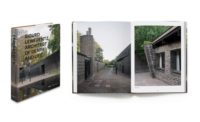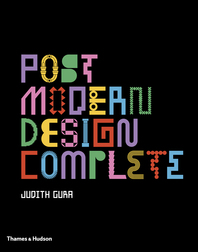REJECTION OF THE SACRED
In one of the most lucid and revealing of his lectures--dealing with the Bauhaus, and delivered in Weimar in 1998--Libeskind expressed his admiration for the Bauhaus model of an "architecture permanently displaced", which rejected outright the lure of the sacred. It was, he went on with growing admiration, "here, in the domain of the sacred, that the Bauhaus declared war and wrought havoc … Gods were toppled, orders broken, walls smashed, the center removed." And, in the most revealing passage of all, he dismissed the whole notion of the sacred as being "no more… than the empty ritual, a formalism… the evil of senseless habits, the purpose of which is to deprecate reality in the name of convention so it may become fulfilled through an image."
These bleak words contain the essential generator of Libeskind's brand of architecture. His architecture revels indissonance, is the ne plus ultra of theoreticism, and regards as antithetical any ritual which might promise a return to wholeness. It thus exiles itself from its primordial relationship with nature.
APPEALS TO SCIENCE
Libeskind is not the first architect of the last century to have been inspired by popular science to make formal analogies with the natural world. This has led him into statements every bit as convoluted as those so mischievously exposed among post-structuralist French philosophers by Alan Sokal and Jean Bricmont (in their 1998 book Intellectual Impostures/Fashionable Nonsense). In Libeskind's texts, references to chaos and complexity, including fractals, conceal an approach to spatial organization which, as we have seen, is highly deterministic, and almost entirely lacking in the adaptive, stochastic processes which give rise to lifeforms that exhibit such features naturally.
The jolt of novelty and strangeness one gets from Libeskind's designs is apt to blind one at first to their ultimate shallowness. They are no more truly scientific than those early twentieth-century buildings in which the search for geometrical novelty manifested itself through (non-fractal) forms which mimicked crystalline structure--forms entirely irrelevant to the manifold functions of such buildings.
Libeskind's employment of fractals (as a tiling design on so-called frac-tiles devised by the engineer Cecil Balmond) on the proposed "Spiral" extension to the Victoria and Albert Museum is a case in point. These tiles represent nothing more than surface decoration, utterly at odds with both the overall massing, and the lines formed by the building's edges. This gives predominance to these aggressive edges, and creates a caesura between architectural form and decoration typical of modernism, and which over the last century has served to reduce ornament to being either unnecessary, or "ironical." We have here a misapplication of the self-similar fractal geometry found in natural forms.
Libeskind's claim that his tiles are engaged in some kind of "dialogue" with Owen Jones's Grammar of Ornament (1868) ignores what successful ornament actually does. There is a world of difference between the arborescent nature of the ornament Jones catalogued, which could unite the broad masses with the fine tooling of historic buildings, and the fractals with which Libeskind merely distresses the sloping walls of the V&A "Spiral." This addition would therefore exist in isolation not only from the rest of the building, but also--because his fractal tiles occupy a self-contained world of mathematical perfection, insulated from truly living processes--the rest of the universe. Even in their details, therefore, Libeskind's buildings are deterministic rather than adaptive, and it is well known that adaptive natural structure is the source of life, non-adaptation leading only to death.
CONFUSING LIFE WITH DEATH
If one examines carefully Libeskind's body of (mostly unbuilt) work, it can be seen to exhibit two distinct strands, with a few works attempting to combine aspects of both. On the one hand, his buildings (like Berlin [1988-99], and Osnabrück [1995-98]) view history and tradition in general, and civic culture in particular, as marked for all time by the awful scissure of the Holocaust, the Shoah. On the other, in a group of ongoing designs (the Jewish Museum in San Francisco [1996-2004], the Art Museum in Denver [2000-05], and the extension for the Victoria and Albert Museum in London [1996-?]), Libeskind says he wants to reunite the frayed ends of a city's history and culture. The first strand of work is desperately pessimistic, whereas the second is brimming with optimism. Between these extremes we have the recently-completed Imperial War Museum of the North, in Manchester [1997-2002], whose characteristic shards represent the brokenness of war, but which, at the same time, is intended to contribute to urban regeneration.
In fact, Libeskind's architecture, as seen in the Jewish Museum or the Nussbaum Haus, seeks explicitly to embody an extinction on a massive scale--namely the Holocaust. In Berlin the "geometry of death" which results from this might be accepted, on account of the fact that we must not turn away from, and forget, the awful events that building symbolizes; but it cannot be excused in buildings which pretend not only to participate in the life of the city, but even to enhance it in some way. Is the "geometry of death", which justifiably gives form to this class of building, transformed by Libeskind, and if so how? Do those of his buildings which seek instead to connect and give life obey a more appropriately generative geometry, a recognizable "geometry of life"?
There is as yet no final agreement among scientists as to what life is, but there is a growing measure of consensus about what the nature of the processes might be that underlie it. Some characteristic properties are: (i) Life has connectivity and pattern at its heart. (ii) Life is "organized complexity", a potent mixture of rule and contingency, order and spontaneity. (iii) Life is not definable through traditional mathematical equations which purport to give "an answer," but is more of an unfolding, comparable to the action of a computer program. (iv) Life is a genetic algorithm which evolves and develops complexities as it learns. (v) And life is not just complex, but--even more mysteriously, perhaps--it is ordered, displaying an incredible range of symmetries.
Not one of these characteristics of organic life finds a parallel in the forms of Libeskind's architecture, but only occasionally in the words that accompany his projects. It is difficult to see how they could do so, in an architecture that is based on an utter rejection of the sacred, and that condemns those patterns of activity--for him only "senseless habits" after all--which inevitably accompany a sense of the sacred. Libeskind merely represents the latest stage in the profession's determined rejection of the knowledge and the representation of life, in favor of abstract, supposedly more architectonic means of expression.







Post a comment to this article
Report Abusive Comment